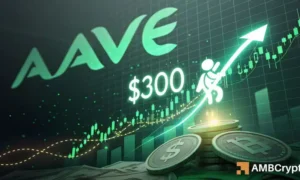The Future of Financial Architecture: Introducing the Finternet
In today’s rapidly evolving financial landscape, Anurag Arjun, Co-Founder of Avail, emphasizes the need for a revolutionary approach that goes beyond simple transactions. This new financial architecture, or the "Finternet," aims to create a system where value, identity, and rights can be verified and enforced across diverse platforms and institutions. The current systems remain fragmented, leading to inefficiencies that hinder seamless transactions and interactions.
The Challenge of Fragmentation in Financial Systems
During a discussion in Dubai, important insights emerged regarding the current state of financial infrastructure. Identifying problems with existing systems, Anurag highlights that each new payment solution often reconstructs its own set of ‘rails,’ lacking interconnectivity. This fragmented landscape complicates processes such as applying for loans, where multiple systems like credit scores and asset registrations remain isolated from one another. The core issue is not just about rapid transactions but about a glaring coordination gap that needs addressing to provide a truly integrated financial experience.
The Vision of the Finternet
The Finternet is envisioned as an inclusive, user-centric framework for financial coordination. Unlike previous attempts to build an "internet of value," this model is built on an open infrastructure layer analogous to TCP/IP in traditional internet architecture. Key components of the Finternet include the seamless integration of digital assets, identity verification tools, compliance rules, and legal standards within a unified system. This holistic approach not only enhances user experiences but significantly broadens possibilities for individuals and organizations in secure and innovative financial networks.
Enhancing Coordination through Verifiability and Transactability
One striking analogy presented by Anurag involves the return to simplicity seen in traditional monetary transactions, where cash or physical tokens allowed for direct exchanges without external dependencies. In contrast, the digitization of finance, while enhancing scalability, has added layers of complexity due to the disparate systems at play. The Finternet seeks to simplify this process by ensuring two core functions: verifiability and transactability. These principles allow for easier proof of ownership and the ability to execute seamless transactions, which bolster user confidence in a complex financial ecosystem.
Real-world Application and Future Development
As technology progresses, practical implementations of the Finternet’s concepts are already underway in diverse sectors such as property, energy, and capital markets. Collaborations between organizations, financial institutions, and innovators are vital for testing verifiable credentials and interoperable ledgers. The challenge remains: how to effectively bridge the gap between decentralized blockchain technology and existing systems. The ongoing integration effort not only focuses on moving money but also on establishing rights, rules, and coordination across various jurisdictions without requiring in-depth technological insight from users.
The Call to Action for Stakeholders
In conclusion, the transition towards a comprehensive financial landscape requires a collaborative effort from developers, institutions, and regulators. Developers are called upon to create user-friendly applications that maintain privacy and security while navigating the complexities of cryptography. Meanwhile, institutions can explore opportunities to integrate tokenized assets and validate credentials, driving innovation in financial products. For policymakers, the emphasis should shift from stringent enforcement to embedding trust and accountability within programmable infrastructures. This collective journey towards the Finternet is still in its infancy, presenting a promising canvas for ongoing innovation that strives to connect everyone, everywhere.
In summary, the Finternet exemplifies a bold vision for a financial future grounded in verifiability and inclusivity. As we collectively confront the challenges of fragmentation and inefficiency in existing systems, the Finternet offers a pathway toward a more interconnected and user-friendly financial ecosystem. The journey forward requires commitment from all stakeholders, but the rewards of achieving a unified financial infrastructure may ultimately transform our economic landscape.

















